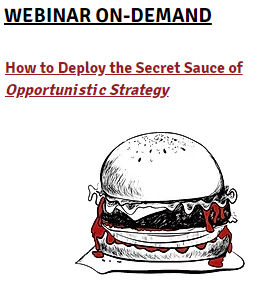Someone at a conference asked me what’s the biggest mistake medical group leaders make. That’s easy, I told him, it’s not engaging me to represent them.
He told me to get serious. I told him that I was. So, he asked me what’s the second biggest mistake.
Many medical group leaders bemoan their group’s circumstances. Some feel caught in the hard place between increasing commoditization, what they believe to be the limitations of independent structure, and the pressure of regional or national groups or of hospital employment. Other leaders feel like bystanders as hospitals and hospital systems attempt to take charge of their medical group’s future through RFPs for physician services or through the closure of facilities and even bankruptcy.
As a result, they often believe in a future with limited choices, one in which they are followers or, worse, spectators. They begin to think in terms of being limited to sell to, or be subsumed by, a large group or hospital. They begin to think, even if they are not in a hospital-based specialty, that their future hinges on the hospital’s decisions.
But for those capable of strategic thinking and not merely tactical action or, even worse, simply reaction, there are multiple choices. For example, radically changing your business structure and method of business, expanding to new practice sites, merging with other independent groups, linking through MSO-like structures, and the creation of joint ventures.
Unfortunately, even when they become aware of alternatives, and of their mix and match nature, too many group leaders become confused. They don’t know what the next step is. They worry that that step might not be the right one. They don’t want to spend any money on their future. They want a sure thing. They don’t know how to get from where they are to where they want to be. As a result, they stop. Paralyzed. In place.
That’s the point that the second biggest mistake lurks. It’s timing, the failure to begin the process of moving past the doubt or paralysis when there’s more time to maneuver. Simply put, the time to get started was years ago, or last month, or yesterday. But none of those are available choices any longer, so today is the best choice.
There’s a thought tool to help with the first step.
First, don’t think about moving from where you are to where you want to be. That too often leads to simply improving your current situation, which is akin to building a fancier building on top of a known fault line. Instead, use your desired destination stage to pull you toward its completion. Take one step in that direction. Then take the next.
It’s imperative that you get started now and that you become willing to invest in your own future.
Will you succeed? There’s no guaranty. But at least you won’t be frozen; the deer in the headlights of someone else’s success.




